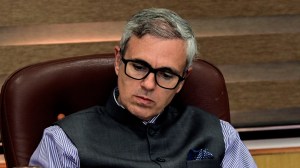Dreams run dry in Mira-Bhayander
Being a avid nature-lover who grew up in the rural hinterland, my idea of home always included a frontyard, a garden, a swing and a small...

Being a avid nature-lover who grew up in the rural hinterland, my idea of home always included a frontyard, a garden, a swing and a small tulsi plant. So when we decided to buy a house, suburbs for their clean air and open sky where one can return from the maddening Mumbai’s rat race seemed the natural choice. My family is among the thousands of others who have invested all their savings and taken loans to invest in a home at Mira Road.
Garbage removal is an exercise in rarity, and of course there is hardly any hope of getting water supply in the near future.
The early 90s’ real estate boom saw Mira Road and Bhayander emerge as an ideal place of residence for upper and middle-class families, linked as it was to Mumbai on the direct line via MTNL and could be reached by road easily if the suburban train services threw a surprise.
In the first year of residence here, we were faced with many problems but we put up a brave face, thinking it was just a temporary phase. I remember the first rains when the entire frontyard had got flooded and we were very happy. Our happiness soon turned to despair when we realised that the receding water had taken all the fertile top-soil with it, and the underlying salinity was making its presence felt. In the last five years the salinity has ensured that the plants either stopped flowering or simply wilted away.
We were not prepared for the rude souring of our ek-bangala-bane-nyaara dream and we learnt to depend on the tankers which brought us diseases like viral fever, cholera, jaundice and Hepatitis-B along with drinking water. With the monthly instalments of the home loan, a better part of the budget would get allocated towards paying hefty maintenance charges to the society for the tanker water supply. While buses don’t ply here the automen refuse to ply on the kind of roads that exist in this area.
Now, five years down the line, the question upper-most our mind is: Is there hope? The answers is: Yes, but only if the administration is sensitive enough and citizens less apathetic. Unfortunately for the residents, of the 50 councilors 40 are either builders or tanker-owners. The rest are either contractors or agents providing illegal water connections. Rs 35,000-50,000 are charged for providing these connections in the name of conducting repairs to the pipelines. As a result, while those who opt for illegal connections get some water, the tax-payers go dry.
Work on new buildings — most of which are towers — however continues unabated. Bookings for the same are made by attracting the gullible working class with promises of “24-hour water supply.” I don’t remember the local administration ever getting tough with such builders or issuing clarifications contradicting these claims.
New flat owners arriving in this township try to approach the local councillors with complaints, but they soon learn their problems will not be solved because it is on the strength of these that the councillors of all parties have built empires for themselves.
A good example of this is corporator Muzaffar Hussain. When he became the water supply committee chairperson the 25 water connection of his choice got preference over the 75 others in the queue for years together. It took the collector’s intervention to see that this proposal was dismissed.
By the end of the last decade Mira-Bhayander had become a major attraction for builders who made fortunes by selling middle-class dreams. By 1992-93, it became clear that the twin-townships would face a serious water crisis, and the flat rates crashed. In a planned manner the crafty builders spread a rumour that the entire area was being amalgamated into the Brihanmumbai Municipal Corporation (BMC). With this the rates soared back by Rs 250-700 per sq foot. For some strange reason the state government did not deem it necessary to clarify that this was untrue.
It is thus not at all surprising when citizens, who have lost all use for politicians and their platforms, took to the streets in a violent display of their anger recently. For, these are the people whose dreams have withered with their potted plants hung in their balconies. Mira-Bhayander is an excellent example of how an insensitive administration and corrupt politicians walk over the hard-earned home-sweet-home dream of citizens.
This history of civilisation has shows that humanity has settled near sources of water. So, its ironical that a township that claims to be planned for the 21st century does not have water. If these conditions persist, the concrete jungle that is Mira-Bhayander will soon turn into a battlefield.
(Deepak Kumar Pachpore is chief reporter of the Hindi daily Navbharat)







- 01
- 02
- 03
- 04
- 05
























